May 2024 Newsletter
10 years of the National Decree 574 enabling the Bi-trains in Argentina. What was done right and were did it all go wrong (in my opinion)
This past April 22 marked 10 years since the legislation that approved the national circulation of the 30 meter- 75 ton- 9 axles bitrain in Argentina was passed. The then President explained at a rally what the bitrains were, all the benefits for productivity, road safety and the environment they could bring to the country, all broadcasted on national TV.
Not everyone was happy with the news, so it took another 18 months for the more detailed regulations to be published – and not online, since there was so much negative arguing at an election year. Only those- like myself- who were “in the know” could go personally to the Transport Ministry and get the printed regulations.
I would like to take the chance of this 10-year anniversary to send a big hug to those who, with vision and perseverance and, while being competitors in the market, understood that road safety and productivity are not antagonistic. Several of these individuals are enjoying a well-deserved retirement or taking care of grandchildren. Congratulations!
More and more testing and demonstrations after demonstration were done, with influential groups arguing strongly for or against the introduction of this HPV into the road network. In January 2018, 4 years after Decree 574 and with another President and another legislation- the configuration was out travelling on designated roads across the country.
I distinctly remember it was mid January, a smart move because most people are on summer holidays, so the launch of these kinds of news go under the radar. Today I see them (and show them excitedly to friends) passing by in the city’s motorways and avenues. As we had always argued in those previous years to the decree, no one except possibly other truck drivers notice the difference with other smaller trucks. For example, the City of Buenos Aires eliminated in October 2023 any time restriction on bitrain circulation “in order to incentive its use”. Initially bitrains were only permitted from 10pm to 6am to access the ports, when the city is quiet.
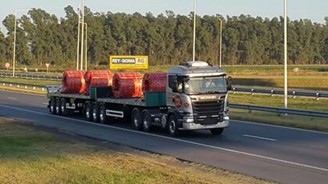
Ternium, for example, uses 22.50 m long-75ton bitrains to transport its steel coils along 395 km to destination in Buenos Aires ports. Four instead of two! To reduce costs even further, Ternium made an agreement with a cement company to make a return trip with cement bags.
What do I think we did right?
Firstly, the regulations indicated that bitrain trailers had to be newly manufactured, with all the active and passive safety devices available at the time made compulsory for both trucks and semis. Most of these technologies optional at that time. Power to weight ratio, almost doubled and except the 60ton bitrain, which could be a 6×2 with traction control, all others had to be 6×4 traction. Most importantly, all elements had to be factory installed and certified and no retrofitting were allowed.
Secondly, in 2014 there were no 30,5meter configurations yet used or tried, but authorities were persuaded to included them, looking to the future and their successful use in other countries. This move would prove a particularly advantageous; currently this configuration is extensively used by the automotive industry, reducing the need of one truck by taking two 40” containers for over 900km one way from the ports to the assembly plants.
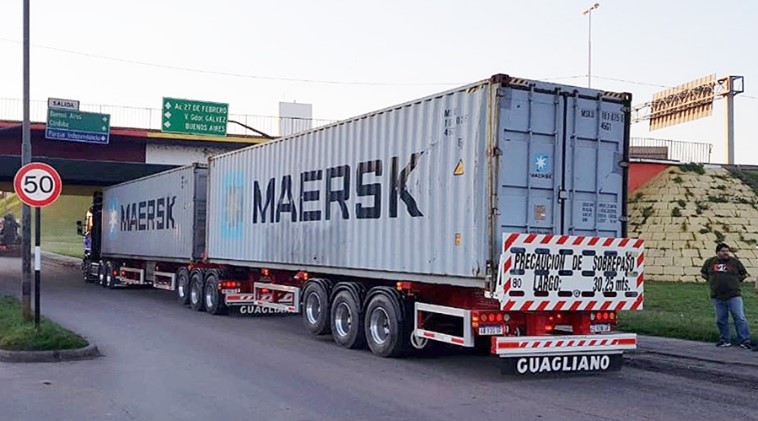
Today, the configuration is used by all sorts of industries, and the designs to cater for the different requests are unlimited. The picture below shows a bitrain manufactured in Argentina with sliding capabilities, for rear loading at docks both trailers.
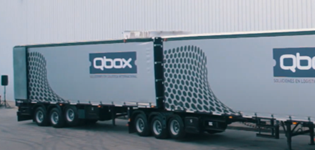

So where did all go wrong?
The new 2018 legislation succumbed to industry lobbying and the following government permitted a weight increase of up to 10 tons more with 6 axles, instead of 5 axles and 45 tons GVM. The bitrains were included into a list of 29 different configurations, with the following regulation:
- the 60tons bitrains, no restrictions
- The up to 25.5m 75 ton, travel according to a map of approved roads, by the national roads authority
- Over 25.5m 75 ton, request a specific road to be approved.
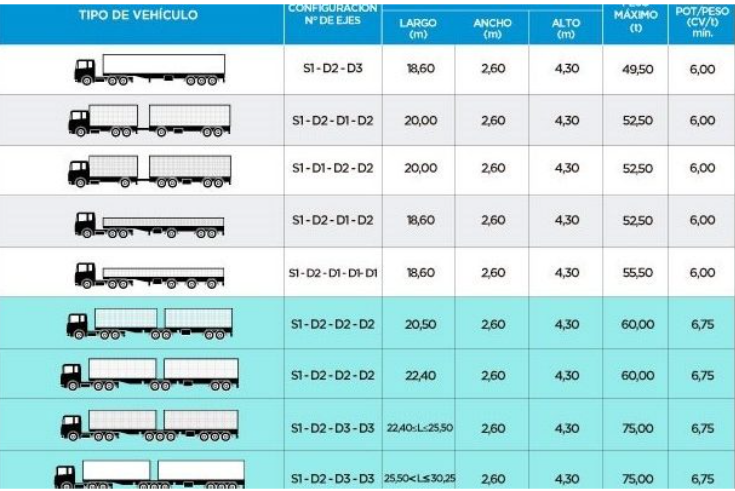
The new 6 axle configurations, called “scalables”, can travel with no restrictions, and do not need to be newly manufactured. Although initially they were requested to have some of the safety devices compulsory on the bitrains, there are few officials on the road who would notice or know how to check the existence and/or correctly functioning of these devices (compatibility between truck and trailer ones, for example). Two systems for avoiding overloading, the On-Board Mass (OBM) systems and the Integrated lift axle system (ILAS), are compulsory for the bitrain but not required in the scalables.
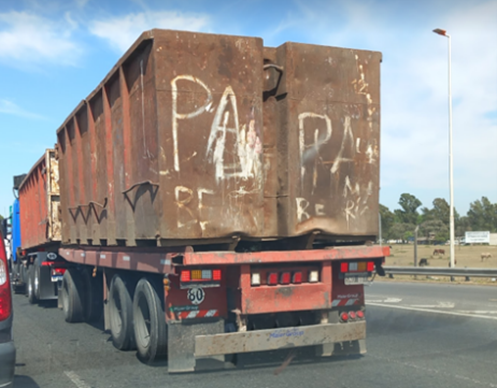
The new legislation also allows retrofitting an axle, converting the 4×2 traction truck into a 6×2. The regulation requires air suspension, ABS EBS and ESC, but by allowing the use of existing trailers some unsafe configurations are travelling on our roads, legally, like the one in the picture on the left, with a GVM of 52,5 tons.
While scalables represent a lower capital investment cost for transport operators, operational and safety difficulties have left many shippers disappointed with the performance of some of the configurations such as the truck on the right, known as 1+1+1, GVM 55tons.
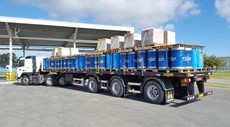
Regarding road wear, scalables do not represent an improvement on the current situation, with higher axel weights permitted and little to no overloading control. So, the possibility of increasing productivity while safely reducing the costs of transporting goods has been squandered.
Where do we go from here?
If we have learned anything from this experience, it is that we still need people to debate intermodal transportation policies to achieve regional prosperity. Not a technological debate but a political one.
I am happy to report that a new legislative push has started this year in the national Senate, to open the national roads to the 25.5m 75ton bitrains. Mostly because of shippers and manufacturers with sustainable reporting commitments.
In the 16th century, Niccolo Machiavelli wrote in his famous book “There is nothing more difficult to take in hand, more perilous to conduct, or more uncertain in its success, than to take the lead in the introduction of a new order of things. For the innovator has enemies in all those who profit by the old order, and only lukewarm defenders in all those who would profit by the new order, this lukewarmness arising partly from fear of their adversaries … and partly from the incredulity of mankind, who do not truly believe in anything new until they have had actual experience of it.”
It has been over 40 years since the first B-double was on Canadian and then Australian roads, and tried since then in many countries, achieving similar levels of higher productivity and safety, but with different rates of success in terms of legislation and implementation. I guess even Machiavelli would not believe the continuous strong resistance to the HPVs. We can only try, and hope.
On a more cheerful note, winter has arrived early. I would have complained other times, but this year we saw the worst ever dengue epidemic in the region. Swarms of mosquitoes made it almost impossible to enjoy anything outdoors, so welcome the cold!
Have a lovely weekend all,
Dr. Alejandra Efron
HVTT Vice President South and Central America
